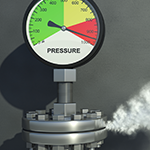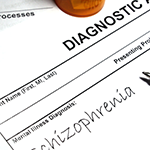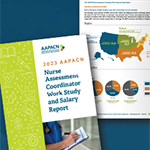
Articles from AAPACN
Browse expert-written articles on topics that impact your everyday work. Find practical and compelling content written by AAPACN nursing experts who scour through mountains of information to identify the breaking news you need to do your job, to help your team perform, and to improve resident outcomes. Want access to all AAPACN articles? Learn more about AAPACN and AAPACN membership.
- CMS Minimum Staffing Final Rule: Staffing Mandates Only Set the Baseline
 The Minimum Staffing Standards for Long-Term Care (LTC) Facilities and Medicaid Institutional Payment Transparency Reporting final rule adopts the Centers for Medicare & Medicaid Services’ (CMS) proposed three-pronged, comprehensive staffing approach for Medicare- and Medicaid-certified …
The Minimum Staffing Standards for Long-Term Care (LTC) Facilities and Medicaid Institutional Payment Transparency Reporting final rule adopts the Centers for Medicare & Medicaid Services’ (CMS) proposed three-pronged, comprehensive staffing approach for Medicare- and Medicaid-certified … - How to Hire the Best NP—Even if Someone Else Is Doing the Hiring
 The director of nursing services (DNS) in a nursing home often is presented with a newly hired nurse practitioner (NP) or other advanced practice registered nurse (APRN) as a fait accompli (i.e., a done deal), …
The director of nursing services (DNS) in a nursing home often is presented with a newly hired nurse practitioner (NP) or other advanced practice registered nurse (APRN) as a fait accompli (i.e., a done deal), … - Working With NPs and Other APRNs: Learn to Maximize the Benefits
 Increasingly, nurse practitioners (NPs) and clinical nurse specialists (CNSs), also known as advanced practice registered nurses (APRNs), work either directly for or closely with nursing homes to improve resident care outcomes—as do physician assistants (PAs). …
Increasingly, nurse practitioners (NPs) and clinical nurse specialists (CNSs), also known as advanced practice registered nurses (APRNs), work either directly for or closely with nursing homes to improve resident care outcomes—as do physician assistants (PAs). … - Mock Drills for Abuse Situations
 A resident-to-resident incident occurred on the dementia unit, resulting in an injury to one resident. The altercation surprised the staff, so their response to the situation was not immediate. Additionally, when they intervened, they did …
A resident-to-resident incident occurred on the dementia unit, resulting in an injury to one resident. The altercation surprised the staff, so their response to the situation was not immediate. Additionally, when they intervened, they did … - Draft MDS v1.19.1 Data Specs: What to Know and How to Prepare for Oct. 1, 2024
 Nurse assessment coordinators (NACs) and other interdisciplinary team members can breathe a little easier as they look ahead to the Oct. 1, 2024 implementation of the MDS version 1.19.1 item sets. The MDS 3.0 Item …
Nurse assessment coordinators (NACs) and other interdisciplinary team members can breathe a little easier as they look ahead to the Oct. 1, 2024 implementation of the MDS version 1.19.1 item sets. The MDS 3.0 Item … - Navigating B0700 and MDS Interviews
 It’s the “Which came first, the chicken or the egg?” question of the Minimum Data Set (MDS) world: Which do you assess first, B0700 or the MDS scripted interviews? It’s easy to get lost in …
It’s the “Which came first, the chicken or the egg?” question of the Minimum Data Set (MDS) world: Which do you assess first, B0700 or the MDS scripted interviews? It’s easy to get lost in … - FY 2025 SNF PPS Proposed Rule: CMS Seeks More Enforcement Power With CMPs
 A survey finding of noncompliance with the Medicare and Medicaid requirements of participation may soon be a little more difficult for nursing homes to navigate without significant financial burden. In the March 28, 2024 Fiscal …
A survey finding of noncompliance with the Medicare and Medicaid requirements of participation may soon be a little more difficult for nursing homes to navigate without significant financial burden. In the March 28, 2024 Fiscal … - FY 2025 SNF PPS Proposed Rule: Four Key Proposals for NACs to Keep an Eye on
 In the March 28, 2024 Fiscal Year (FY) 2025 Skilled Nursing Facility Prospective Payment System (SNF PPS) proposed rule, the Centers for Medicare & Medicaid Services (CMS) doesn’t propose the dizzying number of changes that …
In the March 28, 2024 Fiscal Year (FY) 2025 Skilled Nursing Facility Prospective Payment System (SNF PPS) proposed rule, the Centers for Medicare & Medicaid Services (CMS) doesn’t propose the dizzying number of changes that … - Isolation Coding on the MDS: MAC Target Drives Home Documentation Needs
 Almost all nursing homes are currently staffing-challenged, and that has a direct impact on the quality of the documentation available to support MDS coding, points out Brenda Sowash, RN, RAC-CT, director of clinical assessments, standards, …
Almost all nursing homes are currently staffing-challenged, and that has a direct impact on the quality of the documentation available to support MDS coding, points out Brenda Sowash, RN, RAC-CT, director of clinical assessments, standards, … - Medication Indication of Use: The Big Why
 Nurses use a common problem-solving technique in root-cause analysis called the “Five Whys.” This method asks “why?” as many times as needed to determine the root cause of the problem. Sometimes this process requires more …
Nurses use a common problem-solving technique in root-cause analysis called the “Five Whys.” This method asks “why?” as many times as needed to determine the root cause of the problem. Sometimes this process requires more … - 4 Key Purposes of the Care Area Assessment Process
 The care area assessments (CAAs) are a vital part of the Resident Assessment Instrument (RAI) process to develop a plan for individualized resident care. Taking shortcuts with the CAA process can result in generic care …
The care area assessments (CAAs) are a vital part of the Resident Assessment Instrument (RAI) process to develop a plan for individualized resident care. Taking shortcuts with the CAA process can result in generic care … - Why NACs Need to Actively Manage Physician Certs/Recerts—and What to Look for
 The nurse assessment coordinator (NAC) who also serves as the primary Medicare nurse doesn’t always complete either the physician certification/recertification process or the beneficiary notification process for Medicare residents, says Scott Heichel, RN, RAC-MT, RAC-CTA, …
The nurse assessment coordinator (NAC) who also serves as the primary Medicare nurse doesn’t always complete either the physician certification/recertification process or the beneficiary notification process for Medicare residents, says Scott Heichel, RN, RAC-MT, RAC-CTA, … - Process Surveillance Plus QAPI Equals Better Infection Prevention Training
 Nursing homes are required to establish a surveillance system (i.e., “the routine, ongoing, and systematic collection, analysis, interpretation, and dissemination of surveillance data”) as part of their infection prevention and control program (IPCP) under F-tag …
Nursing homes are required to establish a surveillance system (i.e., “the routine, ongoing, and systematic collection, analysis, interpretation, and dissemination of surveillance data”) as part of their infection prevention and control program (IPCP) under F-tag … - Common Missteps in Addressing Plan of Correction Criteria and Best Practices for Compliance Sustainability
 According to the Nursing Homes webpage of the Centers for Medicare & Medicaid Services (CMS) site, “Skilled nursing facilities (SNFs) and nursing facilities (NFs) are required to be in compliance with the requirements in 42 …
According to the Nursing Homes webpage of the Centers for Medicare & Medicaid Services (CMS) site, “Skilled nursing facilities (SNFs) and nursing facilities (NFs) are required to be in compliance with the requirements in 42 … - Learn How to Take Staff Survey Preparation From Reactive to Proactive
 “Why in the world did my staff member say this?” and “Why did my staff do that?” are two questions that no director of nursing services (DNS) wants to have when reading the Statement of …
“Why in the world did my staff member say this?” and “Why did my staff do that?” are two questions that no director of nursing services (DNS) wants to have when reading the Statement of … - Interrupted Stays: Five Takeaways To Remember
 The interrupted-stay policy in the Patient-Driven Payment Model (PDPM) of the Medicare Part A Skilled Nursing Facility Prospective Payment System (SNF PPS) governs when multiple SNF stays are combined into a single interrupted stay (i.e., …
The interrupted-stay policy in the Patient-Driven Payment Model (PDPM) of the Medicare Part A Skilled Nursing Facility Prospective Payment System (SNF PPS) governs when multiple SNF stays are combined into a single interrupted stay (i.e., … - iQIES Essentials for the Nurse Assessment Coordinator
 In the ever-evolving realm of healthcare data management, the transition of the Minimum Data Set (MDS) submission process to the Internet Quality Improvement and Evaluation System (iQIES) in April 2023 marked a significant milestone for …
In the ever-evolving realm of healthcare data management, the transition of the Minimum Data Set (MDS) submission process to the Internet Quality Improvement and Evaluation System (iQIES) in April 2023 marked a significant milestone for … - New Measures, No Data: When Can Facilities Expect to See New Quality Measure Data?
 One of the frustrations nursing home providers have experienced since the transition to the Minimum Data Set (MDS) 3.0 version 1.18.11 that went into effect on Oct. 1, 2023, is being able to effectively monitor …
One of the frustrations nursing home providers have experienced since the transition to the Minimum Data Set (MDS) 3.0 version 1.18.11 that went into effect on Oct. 1, 2023, is being able to effectively monitor … - Deep Tissue Injury: Section M Assessment and Coding Tips
 Pressure-related deep tissue injury (DTI) coded in M0300G (Unstageable Pressure Injuries Related to Deep Tissue Injury) does not play a role in Medicare payment under the Patient-Driven Payment Model (PDPM). While DTI is an unstageable …
Pressure-related deep tissue injury (DTI) coded in M0300G (Unstageable Pressure Injuries Related to Deep Tissue Injury) does not play a role in Medicare payment under the Patient-Driven Payment Model (PDPM). While DTI is an unstageable … - Keys to Competencies in Infection Prevention and Control
 Under F-tag 726 (Competent Nursing Staff) in Appendix PP of the State Operations Manual, nursing staff, including registered nurses (RNs), licensed practical or vocational nurses (LPNs/LVNs), and certified nursing assistants (CNAs), must have “the competencies …
Under F-tag 726 (Competent Nursing Staff) in Appendix PP of the State Operations Manual, nursing staff, including registered nurses (RNs), licensed practical or vocational nurses (LPNs/LVNs), and certified nursing assistants (CNAs), must have “the competencies … - Improve Staffing and Quality Care Through Individualized Culture Change of the Nursing Department
 Staff turnover is a nationwide problem for nursing homes and it may be worse than previous reports have suggested, according to a study of newly available Payroll-Based Journal data published in the National Library of …
Staff turnover is a nationwide problem for nursing homes and it may be worse than previous reports have suggested, according to a study of newly available Payroll-Based Journal data published in the National Library of … - Infection Prevention and Control: How to Finetune Whole-House Staff Education
 In calendar year (CY) 2023, F880 (Infection Prevention and Control) was the third most frequently cited F-tag in nursing homes nationwide, as well as the fifth most common at the immediate jeopardy (IJ) level, according …
In calendar year (CY) 2023, F880 (Infection Prevention and Control) was the third most frequently cited F-tag in nursing homes nationwide, as well as the fifth most common at the immediate jeopardy (IJ) level, according … - Respiratory Outbreak! How to Protect the MDS and Capture Key Assessment Data
 With the influenza season in full swing plus the ongoing peaks and valleys of COVID-19 and respiratory syncytial virus (RSV) outbreaks across the United States, nurse assessment coordinators (NACs) should take steps both to protect …
With the influenza season in full swing plus the ongoing peaks and valleys of COVID-19 and respiratory syncytial virus (RSV) outbreaks across the United States, nurse assessment coordinators (NACs) should take steps both to protect … - Navigating the 2024 Landscape: Updates and Changes in Medicare Impacting Skilled Nursing Facilities
 The year 2024 brings a plethora of updates to the Medicare program, several significantly impacting skilled nursing facilities (SNFs). SNF staff must stay well informed about these updates to ensure proper billing and adequate coverage …
The year 2024 brings a plethora of updates to the Medicare program, several significantly impacting skilled nursing facilities (SNFs). SNF staff must stay well informed about these updates to ensure proper billing and adequate coverage … - Reducing Post-Discharge Hospital Readmissions: Set Up the Resident for Success
 Like in-house hospital readmissions, post-discharge hospital readmissions can affect provider performance in the Skilled Nursing Facility Value-Based Purchasing Program (SNF VBP), says Carol Hill, MSN, RN, LNHA, RAC-MT, RAC-MTA, DNS-MT, QCP-MT, CPC, president of Hill …
Like in-house hospital readmissions, post-discharge hospital readmissions can affect provider performance in the Skilled Nursing Facility Value-Based Purchasing Program (SNF VBP), says Carol Hill, MSN, RN, LNHA, RAC-MT, RAC-MTA, DNS-MT, QCP-MT, CPC, president of Hill … - Expedited Determination Notices: Keys to Avoiding Financial Liability, Survey Issues
 The expedited determination beneficiary notification process covers a lot of ground in skilled nursing facilities (SNFs), affecting residents in the fee-for-service (FFS) Medicare Part A program and Medicare Advantage plans, as well as residents who …
The expedited determination beneficiary notification process covers a lot of ground in skilled nursing facilities (SNFs), affecting residents in the fee-for-service (FFS) Medicare Part A program and Medicare Advantage plans, as well as residents who … - Anticonvulsants on the MDS: What to Expect in October 2024
 The Centers for Medicare & Medicaid Services (CMS) announced on the Dec. 7 Skilling Nursing Facilities/Long-Term Care Open Door Forum that the drug classification of anticonvulsants will be added to the Minimum Data Set (MDS) …
The Centers for Medicare & Medicaid Services (CMS) announced on the Dec. 7 Skilling Nursing Facilities/Long-Term Care Open Door Forum that the drug classification of anticonvulsants will be added to the Minimum Data Set (MDS) … - Communication Basics: How Nurse Leaders Can Build a Two-Way Street
 A top-down or autocratic management style is becoming increasingly outdated for dealing with today’s healthcare workforce in non-emergent situations. Other leadership styles, such as transformational leadership, often work better to help staff feel valued, supported, …
A top-down or autocratic management style is becoming increasingly outdated for dealing with today’s healthcare workforce in non-emergent situations. Other leadership styles, such as transformational leadership, often work better to help staff feel valued, supported, … - Communication: The Key to Improved Dialysis Outcomes
 Communication is key to providing residents quality care. This is especially true for dialysis patients who are particularly vulnerable: lack of communication can lead to missed dialysis appointments, medication errors, adverse events, and rehospitalization. This …
Communication is key to providing residents quality care. This is especially true for dialysis patients who are particularly vulnerable: lack of communication can lead to missed dialysis appointments, medication errors, adverse events, and rehospitalization. This … - Speak Up! Improve Communication to Bolster the MDS Process
 Effective communication is the glue holding the MDS process together, says Stacy Grondel, BSN, RN, RAC-MT, CMAC, QCP. director of reimbursement operations at QRM in Addison, TX. “The nurse assessment coordinator (NAC) who is a …
Effective communication is the glue holding the MDS process together, says Stacy Grondel, BSN, RN, RAC-MT, CMAC, QCP. director of reimbursement operations at QRM in Addison, TX. “The nurse assessment coordinator (NAC) who is a … - In-House Hospital Readmissions: How to Prevent Upward Trends
 The average cost of a hospital readmission is 12.4 percent higher than the average cost of the original hospital admission ($16,300 vs. $14,500), according to a 2023 analysis by the Agency for Healthcare Research and …
The average cost of a hospital readmission is 12.4 percent higher than the average cost of the original hospital admission ($16,300 vs. $14,500), according to a 2023 analysis by the Agency for Healthcare Research and … - Mentoring, Coaching, and Counseling, Oh My! How They All Fit Into The Disciplinary Process
 As the leader of the nursing department, the director of nursing services (DNS) plays an integral role in the disciplinary process. Managing employee performance can be challenging, but it is necessary. Failure to address employees’ …
As the leader of the nursing department, the director of nursing services (DNS) plays an integral role in the disciplinary process. Managing employee performance can be challenging, but it is necessary. Failure to address employees’ … - Keep Significant Corrections Simple: Tips for NACs
 The nurse assessment coordinator (NAC) role is a complex one that requires managing numerous deadlines, compliance regulations, and the involvement of the interdisciplinary team (IDT) in the Minimum Data Set (MDS) assessment. The job can …
The nurse assessment coordinator (NAC) role is a complex one that requires managing numerous deadlines, compliance regulations, and the involvement of the interdisciplinary team (IDT) in the Minimum Data Set (MDS) assessment. The job can … - Coding Hallucinations and Delusions on the MDS: Keys to Accuracy and Better Care Plans
 MDS items E0100A (Hallucinations) and E0100B (Delusions) are qualifiers for the Behavioral Symptoms and Cognitive Performance category in the nursing component of the Patient-Driven Payment Model (PDPM). Even more importantly, these conditions that form the …
MDS items E0100A (Hallucinations) and E0100B (Delusions) are qualifiers for the Behavioral Symptoms and Cognitive Performance category in the nursing component of the Patient-Driven Payment Model (PDPM). Even more importantly, these conditions that form the … - Care Planning: A Team Event
 A surveyor investigating a resident with multiple falls approaches a nurse and asks why the care plan wasn’t updated with the latest fall prevention interventions. The nurse tells the surveyor that she doesn’t have anything …
A surveyor investigating a resident with multiple falls approaches a nurse and asks why the care plan wasn’t updated with the latest fall prevention interventions. The nurse tells the surveyor that she doesn’t have anything … - Nonpharmacological Pain Management: How Nursing and Therapy Can Collaborate
 Historically, pain is underassessed and undertreated in the geriatric population, says Liz Barlow, RN, CRRN, RAC-CT, DNS-CT, QCP, vice president of marketing at Synchrony Health Services in Louisville, KY. “Up to 75 percent of community-dwelling …
Historically, pain is underassessed and undertreated in the geriatric population, says Liz Barlow, RN, CRRN, RAC-CT, DNS-CT, QCP, vice president of marketing at Synchrony Health Services in Louisville, KY. “Up to 75 percent of community-dwelling … - Medicare Expedited Determination vs. Financial Liability Notices: What’s the Difference?
 Beneficiary notification requirements under the Medicare program can be confusing for nurse assessment coordinators (NACs) who serve as the lead Medicare nurse and other interdisciplinary team members in skilled nursing facilities (SNFs), says Carol Maher, …
Beneficiary notification requirements under the Medicare program can be confusing for nurse assessment coordinators (NACs) who serve as the lead Medicare nurse and other interdisciplinary team members in skilled nursing facilities (SNFs), says Carol Maher, … - How to Explain the Nurse Assessment Coordinator Role to Others
 The role of the nurse assessment coordinator (NAC) can often be an enigma to many nursing home staff. Misunderstandings about the position abound, and NACs may find it frustrating that no one knows what they …
The role of the nurse assessment coordinator (NAC) can often be an enigma to many nursing home staff. Misunderstandings about the position abound, and NACs may find it frustrating that no one knows what they … - How the DNS Can Lead the Team Before, During, and After an Emergency
 Emergencies can occur at any moment. Fires, hurricanes, snowstorms, ice storms, water main breaks, power outages, and outbreaks are just a few of the emergencies nursing homes must prepare for throughout the year. However, in …
Emergencies can occur at any moment. Fires, hurricanes, snowstorms, ice storms, water main breaks, power outages, and outbreaks are just a few of the emergencies nursing homes must prepare for throughout the year. However, in … - QAPI: How to Maximize Performance Improvement as well as Quality Assurance
 The continuing expansion of the Skilled Nursing Facility Value-Based Purchasing program (SNF VBP) quality measure (QM) set is part of a multi-pronged approach by the Centers for Medicare & Medicaid Services (CMS) to encourage improvements …
The continuing expansion of the Skilled Nursing Facility Value-Based Purchasing program (SNF VBP) quality measure (QM) set is part of a multi-pronged approach by the Centers for Medicare & Medicaid Services (CMS) to encourage improvements … - Schizophrenia Audit Takeaways for NACs and the IDT
 In the Jan. 18, 2023, Quality, Safety, and Oversight (QSO) memo QSO-23-05-NH, the Centers for Medicare & Medicaid Services (CMS) announced plans to conduct offsite audits to assess whether nursing homes appropriately assess, document, and …
In the Jan. 18, 2023, Quality, Safety, and Oversight (QSO) memo QSO-23-05-NH, the Centers for Medicare & Medicaid Services (CMS) announced plans to conduct offsite audits to assess whether nursing homes appropriately assess, document, and … - Avoid Frostbite: Understand the Five-Star Freeze
 The transition from section G to section GG on Oct. 1, 2023, also had a substantial impact on Quality Measures (QMs) and the Five-Star Quality Rating System. The Centers for Medicare & Medicaid Services (CMS) …
The transition from section G to section GG on Oct. 1, 2023, also had a substantial impact on Quality Measures (QMs) and the Five-Star Quality Rating System. The Centers for Medicare & Medicaid Services (CMS) … - SNF VBP QMs: What Just Happened, What’s Next—and What the DNS Should Monitor
 On Oct. 1, 2023, the Centers for Medicare & Medicaid Services (CMS) kicked off a critical step in expanding the Skilled Nursing Facility Value-Based Purchasing program (SNF VBP) quality measure (QM) set. This expansion means …
On Oct. 1, 2023, the Centers for Medicare & Medicaid Services (CMS) kicked off a critical step in expanding the Skilled Nursing Facility Value-Based Purchasing program (SNF VBP) quality measure (QM) set. This expansion means … - Improving Collaboration with the Registered Dietitian
 To meet residents’ individualized needs, the director of nursing services (DNS) requires the expertise of many healthcare professionals working collaboratively. For expertise on nutrition, the DNS should collaborate with the registered dietician (RD), who is …
To meet residents’ individualized needs, the director of nursing services (DNS) requires the expertise of many healthcare professionals working collaboratively. For expertise on nutrition, the DNS should collaborate with the registered dietician (RD), who is … - Putting the Significant Change in Status Assessment Criteria into Clinical Practice
 The Significant Change in Status Assessment (SCSA) has been a federal requirement since the inception of the Resident Assessment Instrument (RAI) process that resulted from the Omnibus Budget Reconciliation Act of 1987. The specifications of …
The Significant Change in Status Assessment (SCSA) has been a federal requirement since the inception of the Resident Assessment Instrument (RAI) process that resulted from the Omnibus Budget Reconciliation Act of 1987. The specifications of … - Stop and Read: Skilled Documentation Audit and Education Lessons for the NAC
 Skilled nursing facilities (SNFs) are increasingly subject to skilled medical review audits from both fee-for-service Medicare (e.g., the SNF Five-Claim Probe and Educate initiative) and individual Medicare Advantage plans. Audit success ultimately hinges on documentation …
Skilled nursing facilities (SNFs) are increasingly subject to skilled medical review audits from both fee-for-service Medicare (e.g., the SNF Five-Claim Probe and Educate initiative) and individual Medicare Advantage plans. Audit success ultimately hinges on documentation … - Lessons From TPE Audits: How the DNS Can Lead Toward Better Skilled Documentation
 In May 2023—after the Comprehensive Error Rate Testing (CERT) program determined that skilled nursing facility (SNF) Medicare Part A services have been “a top driver” of the overall Medicare fee-for-service improper payment rate since the …
In May 2023—after the Comprehensive Error Rate Testing (CERT) program determined that skilled nursing facility (SNF) Medicare Part A services have been “a top driver” of the overall Medicare fee-for-service improper payment rate since the … - Part of the Essential DNS Toolbox: Effective Daily Clinical Rounds
 The director of nursing services (DNS) has many issues to prioritize each day, such as resident falls, staffing, and grievances. Unfortunately, the DNS may be tempted to relegate clinical rounds to “later,” considering them a …
The director of nursing services (DNS) has many issues to prioritize each day, such as resident falls, staffing, and grievances. Unfortunately, the DNS may be tempted to relegate clinical rounds to “later,” considering them a … - The Significant Change in Status Assessment: Key Issues Related to v1.18.11 and Beyond
 The Significant Change in Status Assessment (SCSA) was not a major focus of the revisions in the Long-Term Care Facility Resident Assessment Instrument 3.0 User’s Manual v1.18.11. However, some of the v1.18.11 MDS coding changes …
The Significant Change in Status Assessment (SCSA) was not a major focus of the revisions in the Long-Term Care Facility Resident Assessment Instrument 3.0 User’s Manual v1.18.11. However, some of the v1.18.11 MDS coding changes … - Relieving the Pressure of Coding Reopened Pressure Ulcers
 In the updated Long-Term Care Facility Resident Assessment Instrument (RAI) 3.0 User’s Manual, v1.18.11, the Centers for Medicare & Medicaid Services (CMS) added several clarifications to help ease the pressure that nurse assessment coordinators (NACs) …
In the updated Long-Term Care Facility Resident Assessment Instrument (RAI) 3.0 User’s Manual, v1.18.11, the Centers for Medicare & Medicaid Services (CMS) added several clarifications to help ease the pressure that nurse assessment coordinators (NACs) … - What the DNS Needs to Know About Drug Regimen Review
 Over the past few years, the Centers for Medicare & Medicaid Services (CMS) has placed increasing emphasis on drug regimen review (DRR) aka medication regimen review (MRR). Since 2018, skilled nursing facilities have captured one …
Over the past few years, the Centers for Medicare & Medicaid Services (CMS) has placed increasing emphasis on drug regimen review (DRR) aka medication regimen review (MRR). Since 2018, skilled nursing facilities have captured one … - Tips for a Comprehensive Post-Admission Medical Record Review
 Admissions are vital to a facility. They may occur daily, or even multiple times a day, and should be a part of routine operations. However, the admission process can be cumbersome, and it is easy …
Admissions are vital to a facility. They may occur daily, or even multiple times a day, and should be a part of routine operations. However, the admission process can be cumbersome, and it is easy … - MDS v1.18.11 Is Here: How to Double-Check Efficiency for Long-Term Success
 Now that the MDS version 1.18.11 item sets and the Long-Term Care Facility Resident Assessment Instrument 3.0 User’s Manual v1.18.11 are in play, there are still steps that nurse assessment coordinators can take to ensure …
Now that the MDS version 1.18.11 item sets and the Long-Term Care Facility Resident Assessment Instrument 3.0 User’s Manual v1.18.11 are in play, there are still steps that nurse assessment coordinators can take to ensure … - 4 Essential MDS Changes Documents NACs May Have Missed
 The Centers for Medicare & Medicaid Services (CMS) recently released the Long-Term Care Facility Resident Assessment Instrument (RAI) 3.0 User’s Manual version 1.18.11, and also a document outlining the draft-to-final changes and updated item sets …
The Centers for Medicare & Medicaid Services (CMS) recently released the Long-Term Care Facility Resident Assessment Instrument (RAI) 3.0 User’s Manual version 1.18.11, and also a document outlining the draft-to-final changes and updated item sets … - Implement the New and Revised Resident Interviews on the MDS: How to Be Ready for Oct. 1
 Most of the changes in the MDS version 1.18.11 item sets and the Long-Term Care Facility Resident Assessment Instrument 3.0 User’s Manual v1.18.11 are resident-driven, says Jennifer LaBay, RN, RAC-MT, RAC-MTA, QCP, CRC, a curriculum …
Most of the changes in the MDS version 1.18.11 item sets and the Long-Term Care Facility Resident Assessment Instrument 3.0 User’s Manual v1.18.11 are resident-driven, says Jennifer LaBay, RN, RAC-MT, RAC-MTA, QCP, CRC, a curriculum … - Preparing for Success with ICD-10-CM Changes Oct. 1: How the Facility Coder and Provider Can Ensure Accurate Diagnosis Codes
 Effective International Classification of Diseases, Tenth Edition, Clinical Modification (ICD-10-CM) coding relies on meticulous clinical documentation. It’s not just about assigning codes; it’s about ensuring consistent and comprehensive documentation that substantiates every facet and the …
Effective International Classification of Diseases, Tenth Edition, Clinical Modification (ICD-10-CM) coding relies on meticulous clinical documentation. It’s not just about assigning codes; it’s about ensuring consistent and comprehensive documentation that substantiates every facet and the … - Behavioral Health Education and Training: How to Ensure Staff Can Meet Resident Needs
 The guidance to surveyors in Appendix PP of the State Operations Manual addresses behavioral health education, training, and competencies under two separate F-tags: Did the facility have sufficient staff who provide direct services and implement …
The guidance to surveyors in Appendix PP of the State Operations Manual addresses behavioral health education, training, and competencies under two separate F-tags: Did the facility have sufficient staff who provide direct services and implement … - Tips to Prepare for the Upcoming Respiratory Illness Season
 Fall is fast approaching, and colder weather increases prevalence of respiratory illness. Colds, flu, and other respiratory illnesses such as COVID-19 and Respiratory Syncytial Virus (RSV) become more common in colder months as people stay …
Fall is fast approaching, and colder weather increases prevalence of respiratory illness. Colds, flu, and other respiratory illnesses such as COVID-19 and Respiratory Syncytial Virus (RSV) become more common in colder months as people stay … - Oct. 1, 2023 Will See Performance Period Data Collection for Five SNF VBP QMs
 The key takeaway of the Fiscal Year (FY 2024) Skilled Nursing Facility Prospective Payment System (SNF PPS) final rule, published on Aug. 7, 2023, is that the director of nursing services (DNS) will need to …
The key takeaway of the Fiscal Year (FY 2024) Skilled Nursing Facility Prospective Payment System (SNF PPS) final rule, published on Aug. 7, 2023, is that the director of nursing services (DNS) will need to … - Oral Health: More Than Just Brushing Teeth
 As people age, oral health often declines. Teeth can lose enamel, and gums may recede, causing tooth loss and pain. Oral health is much more than just brushing and flossing. Symptoms in a resident’s oral …
As people age, oral health often declines. Teeth can lose enamel, and gums may recede, causing tooth loss and pain. Oral health is much more than just brushing and flossing. Symptoms in a resident’s oral … - FY 2024 SNF PPS Final Rule Initial Timeline for NACs: How/When the MDS Takes Center-Stage
 Breathing room will be in short supply for nurse assessment coordinators (NACs) and other interdisciplinary team members who need to implement and monitor the multitude of changes to the Skilled Nursing Facility Quality Reporting Program …
Breathing room will be in short supply for nurse assessment coordinators (NACs) and other interdisciplinary team members who need to implement and monitor the multitude of changes to the Skilled Nursing Facility Quality Reporting Program … - NACs Like a Reasonable Challenge: 2023 AAPACN NAC Work Study and Salary Report
 Over the last few years, nurse assessment coordinators (NACs) are being hired with less long-term care experience, being paid more, and facing a multitude of challenges including stress and burnout, staffing shortages, and increased workloads. …
Over the last few years, nurse assessment coordinators (NACs) are being hired with less long-term care experience, being paid more, and facing a multitude of challenges including stress and burnout, staffing shortages, and increased workloads. … - Proposed Staffing Rule: CMS Focuses on a Comprehensive Approach
 In the long-awaited Minimum Staffing Standards for Long-Term Care (LTC) Facilities and Medicaid Institutional Payment Transparency Reporting proposed rule, the Centers for Medicare & Medicaid Services (CMS) proposes a three-pronged, comprehensive staffing approach for Medicare- …
In the long-awaited Minimum Staffing Standards for Long-Term Care (LTC) Facilities and Medicaid Institutional Payment Transparency Reporting proposed rule, the Centers for Medicare & Medicaid Services (CMS) proposes a three-pronged, comprehensive staffing approach for Medicare- … - How the Director of Nursing Services Can Support the MDS Process
 The Minimum Data Set (MDS) determines Medicare and often state Medicaid reimbursement; prompts initial and MDS-assessment-based care planning; provides data that the Centers for Medicare & Medicaid Services (CMS) uses to calculate Quality Measures (QMs) …
The Minimum Data Set (MDS) determines Medicare and often state Medicaid reimbursement; prompts initial and MDS-assessment-based care planning; provides data that the Centers for Medicare & Medicaid Services (CMS) uses to calculate Quality Measures (QMs) … - Behavioral Health: Eight Ways to Boost Compliance—and Help Residents—Under F740
 F740 (Behavioral Health Services) is not a frequently cited F-tag so far in calendar year (CY) 2023, according to QCOR data posted on Aug. 13, 2023. However, the consequences can be severe—surveyors often issue this …
F740 (Behavioral Health Services) is not a frequently cited F-tag so far in calendar year (CY) 2023, according to QCOR data posted on Aug. 13, 2023. However, the consequences can be severe—surveyors often issue this … - Finalized RAI User’s Manual: Eight Key Points to Know
 In preparation for the upcoming Oct. 1, 2023, implementation of the also-just-updated v1.18.11v5 MDS item sets, the Centers for Medicare & Medicaid Services (CMS) has released the final Long-Term Care Facility Resident Assessment Instrument 3.0 …
In preparation for the upcoming Oct. 1, 2023, implementation of the also-just-updated v1.18.11v5 MDS item sets, the Centers for Medicare & Medicaid Services (CMS) has released the final Long-Term Care Facility Resident Assessment Instrument 3.0 … - Solving the Mystery: How to Document for Section GG
 Section GG, Functional Abilities and Goals, will expand to all OBRA assessments starting Oct. 1, 2023, with the retirement of the section G activities of daily living (ADL) items. This change disrupts the long-standing practices …
Section GG, Functional Abilities and Goals, will expand to all OBRA assessments starting Oct. 1, 2023, with the retirement of the section G activities of daily living (ADL) items. This change disrupts the long-standing practices … - RAI Manual v1.18.11 Surprises: PPS Discharges Get More Complex
 Note: This is the third in a series of articles reviewing key issues in the draft v1.18.11 Long-Term Care Facility Resident Assessment Instrument 3.0 User’s Manual that could prove to be disruptive for busy nurse …
Note: This is the third in a series of articles reviewing key issues in the draft v1.18.11 Long-Term Care Facility Resident Assessment Instrument 3.0 User’s Manual that could prove to be disruptive for busy nurse … - Infusion Therapy: Solve These Clinical and Documentation Issues to Provide Better CareInfusion therapy services are so inherently complex that the Centers for Medicare & Medicaid Services (CMS) identifies “intravenous or intramuscular injections and intravenous feeding” and “enteral feeding that comprises at least 26 percent of daily …
- Effective Business Case Development for Budget Wins and Better Care OutcomesThe phrase “budget development time” often elicits moans and groans from facility leadership. During this process, leadership usually asks the director of nursing services (DNS) if he or she has any requests of items to …
- Accurate PDPM Reimbursement: Four Areas of Focus to Shore Up MDS DocumentationThe Patient-Driven Payment Model (PDPM) has been the case-mix classification model used for Medicare Part A skilled nursing facility (SNF) reimbursement since October 2019. Although this payment system has been in place for nearly four …
- RAI Manual v1.18.11 Surprises: Standout Issues in Sections D and KNote: This is the second in a series of articles reviewing key issues in the draft v1.18.11 Long-Term Care Facility Resident Assessment Instrument 3.0 User’s Manual that could prove to be disruptive for busy nurse …
- Psychotropic Medications in the Skilled Nursing Facility: How to Manage the ProcessThe use of psychotropic medications in the skilled nursing facility (SNF) is a controversial issue with implications for resident, regulatory, and financial outcomes. The many requirements can be confusing, especially for a relatively new director …
- F609 Abuse/Crime Reporting Obligations: Keys to SuccessNursing homes face significant risk and liability under F-tag 609 (Reporting of Alleged Violations), says Janet Feldkamp, RN, BSN, LNHA, CHC, JD, a partner in the Benesch Healthcare + Practice Group at Benesch, Friedlander, Coplan …
- Develop an Action Plan for CMS’s Schizophrenia MDS AuditsWritten by: Jessica Stucin, RN, BSN, LNHA, RAC-CT, Assistant Director of Education, MDS Consultants On Jan. 18, 2023, the Centers for Medicare & Medicaid Services (CMS) announced they will be conducting offsite audits in nursing …
- RAI Manual v1.18.11 Surprises: Section M and N Updates Include Course CorrectionsNote: This is the first in a series of articles reviewing key issues in the draft v1.18.11 Long-Term Care Facility Resident Assessment Instrument 3.0 User’s Manual that could prove to be disruptive for busy nurse …
- Using New MDS Items Beyond the MDSSeveral new items added or revised on the Minimum Data Set (MDS) this October are considered social determinants of health (SDOHs): ethnicity, race, language, transportation, health literacy, and social isolation. SDOHs are nonmedical factors that …
- F607: CMS Expects a Comprehensive Approach to Abuse/Neglect Policies and ProceduresSo far in fiscal year 2023 (Oct. 1, 2022 – Sept. 30, 2023), F-tag 607 (Develop/Implement Abuse/Neglect, etc. Policies) is not even in the top 20 most frequently cited F-tags nationwide. However, this citation does …
- DNS and IDT Must Plan Ahead for Oct. 1 MDS ChangesThe Centers for Medicare & Medicaid Services (CMS) released the draft of the Long-Term Care Facility Resident Assessment Instrument (RAI) 3.0 User’s Manual (RAI User’s Manual), version 1.18.11, in April 2023, noting substantial revisions. These …
- OSA Crash Course: Keys to Navigating this Medicaid-Only Payment AssessmentIn a number of Medicaid case-mix states, the MDS v1.18.11 item sets won’t be the only MDS item sets that are implemented on Oct. 1, 2023—a fact that should temper some excitement about certain MDS …
- How Will October 2023 MDS Changes Impact PDPM and Medicare Payment?Many changes are coming to the Minimum Data Set (MDS) effective Oct. 1, 2023. The Centers for Medicare & Medicaid Services (CMS) released the draft of the Long-Term Care Resident Assessment Instrument (RAI) User’s Manual …
- How to Make the Survey Process Smoother: Tips for the New Director of Nursing Services (DNS)The director of nursing services (DNS) position is multi-faceted, and a new DNS must learn a lot quickly. Areas such as providing residents quality care and staffing take top priority, and rightfully so. However, another …
- Medicare Managed Care Basics: Critical Intel for the DNSData from the Centers for Medicare & Medicaid Services (CMS) shows that, as of January 2023, half of all Medicare beneficiaries are now enrolled in a Medicare Advantage plan, according to a recent Kaiser Family …
- Restorative Nursing Payment and Documentation Issues: Keys to SuccessRestorative nursing can impact fee-for-service Medicare Part A payment in the Behavioral Symptoms and Cognitive Performance category and the Reduced Physical Function category of the nursing component in the Patient-Driven Payment Model (PDPM), says Carol …
- AAPACN Advocates for Skilled Nursing Facilities: Response to Comment Request for FY 2024 SNF PPS Proposed RuleThe American Association of Post-Acute Care Nursing (AAPACN) team collaborated with its members and post-acute care experts to advocate for skilled nursing facility (SNF) professionals by making comments on the fiscal year (FY) 2024 SNF …
- Did COVID-19 Slow Down Restorative Nursing? Learn How to Jumpstart the ProgramRestorative nursing took a big hit in many nursing homes during the COVID-19 public health emergency (PHE), says Carol Hill, MSN, RN, RAC-MT, RAC-MTA, DNS-MT, QCP-MT, CPC, president of Hill Educational Services in Warrior, AL. …
- Implement a Survey Preparedness Program: How to Be Survey-Ready All Year LongOn May 11, 2023, the Centers for Medicare & Medicaid Services (CMS) ended certain emergency waivers; put in place during the public health emergency, these waived some F-tag elements that would otherwise have applied during …
- MDS Item O0110: Get Ready for Multiple Look-Back Periods on the Same MDSThis Oct. 1, 2023, MDS 3.0 item O0100 (Special Treatments, Procedures, and Programs) will be retired and replaced with O0110 (Special Treatments, Procedures, and Programs) as part of the transition to the v1.18.11 MDS item …
- Top Attendee Questions from the May 18 AAPACN Webinar on Upcoming RAI Manual ChangesThe Centers for Medicare & Medicaid Services (CMS) recently released the draft Long-Term Care Facility Resident Assessment Instrument (RAI) 3.0 User’s Manual v.1.18.11. With several changes coming this October, the American Association of Post-Acute Care …
- Avoid Playing Psychotropic Shell Games to Resolve Resident BehaviorsAntipsychotic drug use among long-stay residents decreased steadily from 31 percent in 2011 to 22 percent in 2019, according to the November 2022 report Long-Term Trends of Psychotropic Drug Use in Nursing Homes from the …
- F694: Keys to Admitting Residents With Infusion Therapy NeedsPrior to the COVID-19 public health emergency (PHE), skilled nursing facilities (SNFs) were gearing up to take more medically complex fee-for-service Medicare Part A residents, including residents with infusion therapy needs, as a result of …
- Best Practices to Dispute Takebacks for Medicare/Insurance Begin With PreventionIn the 1730s, Benjamin Franklin wrote “An ounce of prevention is worth a pound of cure” to inspire the city of Philadelphia to adopt better fire prevention techniques. What he delivered to history was a …
- Deep Dive into ICD-10-CM: Misunderstood Coding GuidelinesDiagnosis accuracy, long a critical component of the MDS, is escalating in importance. With the recently released draft Long-Term Care Facility Resident Assessment Instrument (RAI) 3.0 User’s Manual version 1.18.11, which will become effective October …
- What the DNS Should Know to Hire an Infection Preventionist: From Regulatory Requirements to Onboarding Best PracticesThe Infection Preventionist (IP) has become an integral part of the nurse leadership team in skilled nursing facilities (SNFs). Therefore, turnover in this important position brings many ramifications. When the IP position is vacant, it …
- The “Personal” in Personal Property Matters—Even With Suspected Illegal SubstancesF557 (Respect, Dignity/Right to Have Personal Property) is one of the shorter F-tags in terms of the amount of guidance provided by the Centers for Medicare & Medicaid Services (CMS), coming in at well under …
- CAA Considerations with Oct. 1, 2023 MDS UpdatesThe draft Long-Term Care Resident Assessment Instrument (RAI) 3.0 User’s Manual v1.18.11, released in early April, presents revised care area triggers (CATs) in chapter 4 and care area assessment (CAA) worksheets in appendix C. To …
- MDS Section GG: Why It May Be Time to Bring in Restorative NursingEffective Oct. 1, 2023, section G (Functional Status) will officially be retired from the MDS 3.0 except in states that choose to implement the Optional State Assessment (OSA) with its limited four-item section G for …
- Why Height and Weight Matter on the MDS and How to Get Them RightWhile many nurse assessment coordinators (NACs) are understandably focused on the changes in the draft v1.18.11 Long-Term Care Facility Resident Assessment Instrument 3.0 User’s Manual, important MDS items that will remain as-is effective Oct. 1, …
- Long-Term Care Survey Process Basics: What the NAC Needs to Know to Prepare for SurveyAccording to the Centers for Medicare & Medicaid Services (CMS), “Skilled nursing facilities (SNFs) and nursing facilities (NFs) are required to be in compliance with the requirements in 42 CFR Part 483, Subpart B, to …
- How the DNS Can Ensure Staff Preparation for Code SituationsA certified nursing assistant (CNA) conducting afternoon rounds finds Mr. Smith slumped over in his chair. The CNA notices that he does not appear to be breathing and calls the nurse for help. The nurse …
